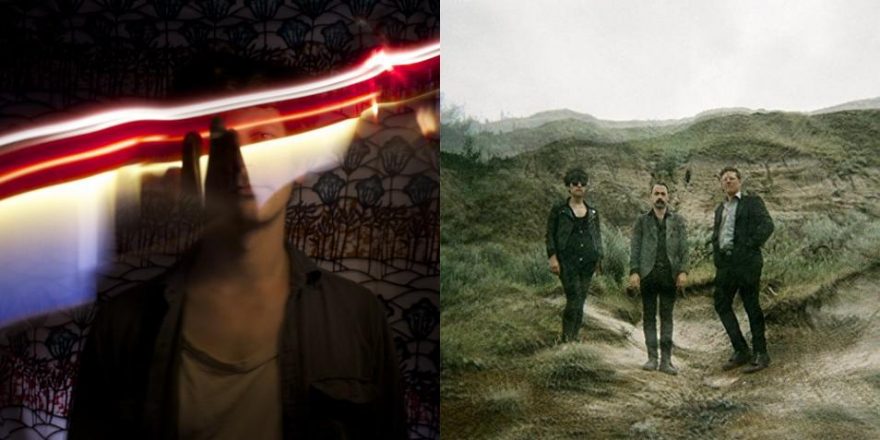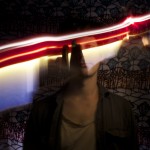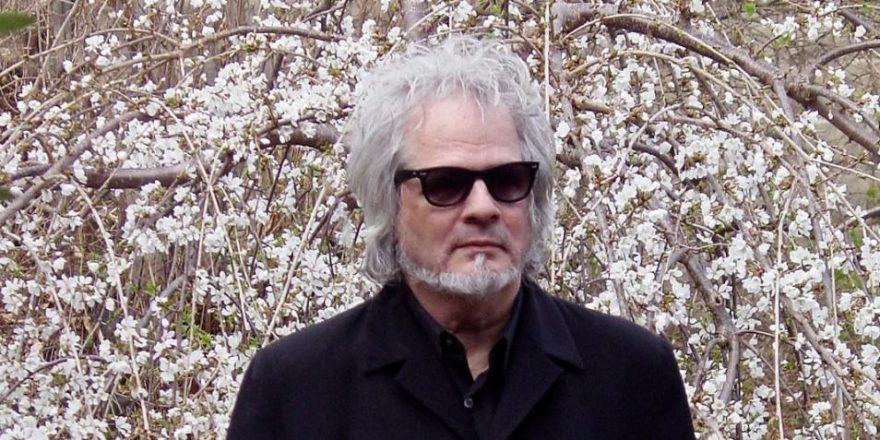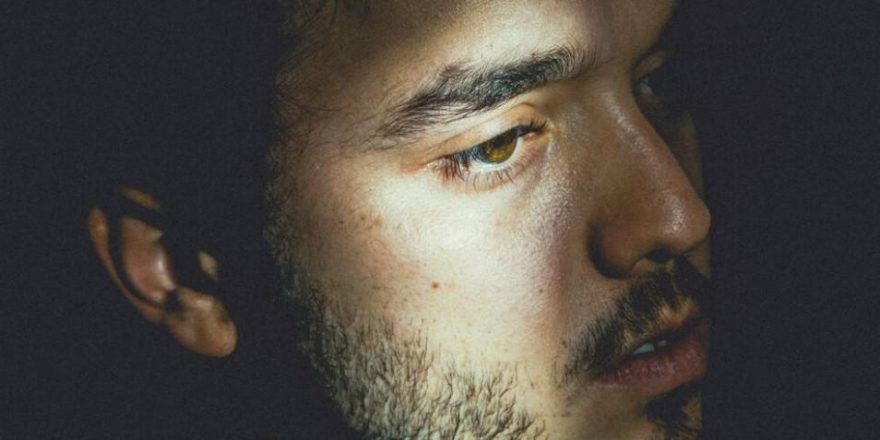It’s never a conscious thing, but I’m most drawn to music that can only be played by the people making it. By this I mean music dependent on the chemistry between the musicians. I’m really attracted to how people communicate with each other, and the members of Montreal band Big Brave boast an ESP-level of connection through the feedback-laced black holes that make up their newest album, Au De La.
A few things happen during “On the By and By and Thereon” — the opening salvo of the band’s second album — that make me think that they’ve spent as much time talking about music as they have playing it. The track is disorienting in its simplicity: each musician plays a stark pattern that repeats for almost half the song. And then the music abruptly stops. There’s tape hiss, amp buzz, the sound of hands moving over guitar strings — and tension, a lot of it. They wait just a little too long to start again — and it’s absolutely perfect. You can tell that drummer Louis-Alexandre Beauregard and singer-guitarist Robin Wattie and guitarist Mathieu Bernard Ball were watching each other when that whole process happened. The last thirty seconds of the song is just drums — recorded through a microphone set up on a piano. The piano strings resonate with the vibrations, adding dissonant tones and harmonics to the low-end thud. It’s a trick that I’ve used too, and I am instantly enamored of anyone who does the same. Big Brave has me, and we’re only five minutes in.
Much has been and will be made of the fact that this is a droney, heavy album released on Southern Lord Records, a metal label run by Greg Anderson, a member of leading drone-metal band Sunn O))), among other bands. But I don’t hear this album as metal — although it’s metallic, the sound of machines scraping together, grinding and working. While you cannot deny Anderson’s fingerprints on the album, I hear more of an influence from his Sunn O))) bandmate Stephen O’Malley’s Ideologic Organ label, particularly the work of the late Ákos Rózmann. Rózmann’s compositions are full of decay and surprise. They are about the sound of what’s happening, not where it’s going. Big Brave pick up this thread on Au De La.
It almost does the album a disservice to break it into individual tracks; I don’t think it was meant to be experienced as anything other than the forty-five-minute open canyon that it is. Its five songs function like five movements, creating a pitch-black narrative that’s dependent on each song’s individual arc to make complete. “(re)collection Part II,” the final track, bookends opener “On the By and By and Thereon” perfectly, waiting a full nine minutes before the band fully locks in. It’s a real payoff when Beauregard drags a blast beat out of a truly inspired free jazz drum solo and either guitarist Wattie or Ball (no bass player needed in this trio) meets him for twenty seconds of pure bliss-out, only to abruptly return to the looping chord pattern that starts the song. It’s the biggest hit of Codeine (both the band and the opiate) that the album offers, and is one of the few scattered allusions to where they may be coming from musically.
Au De La — or au-delà in the traditionally spelled French — translates to “beyond” or “hereafter,” and it’s no wonder the band chose that term to help define this work. So much of it feels like the moment after you hold your breath for too long and finally exhale. It’s physical music that translates subtly — you don’t pick up on the tension until it’s already overpowering. You don’t realize your hand has been clenched or that you’ve been shaking your leg for five minutes until the clouds break and you’re out of the moment. Anxiety hangs heavy over this record, and pieces of music such as the shimmering and free-form opening of “Look at How the World Has Made a Change” function like waking moments — disorientating but familiar, hazy but not unclear. It’s not until more than six minutes into the song when things come into sharp focus. The final five burn in a synchronized, drugged-out pulse.








